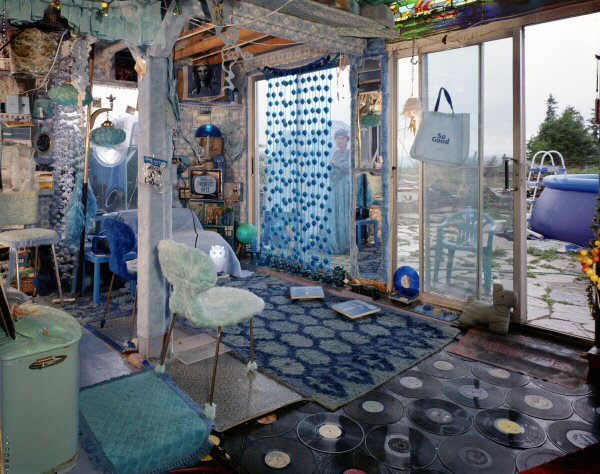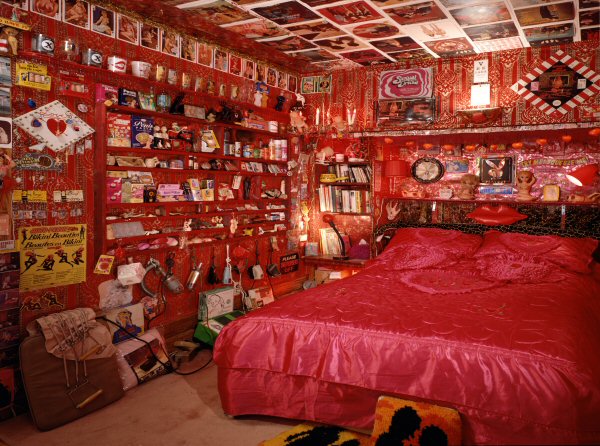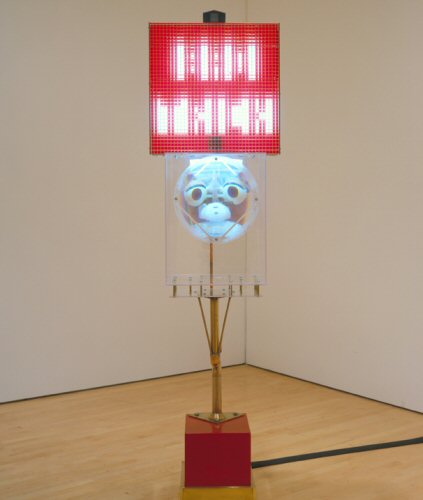Please wait a few moments while we process your request

Caroline Langill, Shifting Polarities
Machinic aesthetics
Laura Kikauka’s Misplaced Affection (1983) was groundbreaking not only for its complex electronic-sendup of the domestic environment, but also for the way the work mirrored feminist discourses of women and technology. Nancy Paterson, an artist active at many levels in the Toronto community, also spoke to questions of gender and technology in her transdisciplinary works Hair Salon TV (1985) and Bicycle TV: Some Interactive Exercise (1989).
In spite of the lack of women engaged in electronic media art by the mid-1980s, Kikauka and Paterson easily navigated the male-dominated arena of digital technologies. Where Paterson focused on our relationship to the television monitor, Kikauka produced dense kinetic environments that were comments not only on technology, but also on commodification and its detritus. When confronted by one of Kikauka’s works, in particular the Funny Farm (1985- ) with its attendant aesthetic of organized entropy, one cannot help but feel that Kikauka was also challenging the politics of display in the museum by embracing low culture, the grotesque, the fair, the carnivalesque.
Doug Back’s work employs similar strategies of anti-institutionalization and anti-conformity. Back’s kinetic sculpture Small Artist Pushing Technology was produced in 1987, but it has since seen at least two subsequent versions based on the initial piece, each version a little tidier and more compliant than the previous. The transparent technology of the first version of Small Artist Pushing Technology, with entrails of wires and cords that were visible and unsightly, edged the work into the grotesque, transgressing the slick aesthetic that post-war literature and film had suggested for the future of technology.
Roland Brener’s Bad Trick similarly conjured up the carnivalesque with its reliance on audience interaction, pixel aesthetics, and found objects. The DIY-approach of Kikauka, Back and Brener introduced a category of machinic aesthetics that has been particularly associated with Canadian electronic media art.
Doug Back’s work employs similar strategies of anti-institutionalization and anti-conformity. Back’s kinetic sculpture Small Artist Pushing Technology was produced in 1987, but it has since seen at least two subsequent versions based on the initial piece, each version a little tidier and more compliant than the previous. The transparent technology of the first version of Small Artist Pushing Technology, with entrails of wires and cords that were visible and unsightly, edged the work into the grotesque, transgressing the slick aesthetic that post-war literature and film had suggested for the future of technology.
Roland Brener’s Bad Trick similarly conjured up the carnivalesque with its reliance on audience interaction, pixel aesthetics, and found objects. The DIY-approach of Kikauka, Back and Brener introduced a category of machinic aesthetics that has been particularly associated with Canadian electronic media art.
Caroline Langill © 2009 FDL
Index:
- Caroline Langill, Shifting Polarities
• Introduction
• Early electronic media works
• Electronic media in 1974
• Between science and art
• Machinic aesthetics
• Interaction and immersion
• Conclusion
• Bibliography
• Selected works - Artist bios and interviews
• Doug Back
• Mowry Baden
• Jean-Pierre Boyer
• Roland Brener
• Diana Burgoyne
• Max Dean
• Alan Dunning
• Murray Favro
• Vera Frenkel
• Juan Geuer
• Laura Kikauka
• Gordon Monahan
• Nancy Paterson
• Catherine Richards
• David Rokeby
• Michael Snow
• Tom Sherman
• Jana Sterbak
• Nell Tenhaaf
• Norman White

















